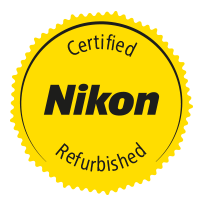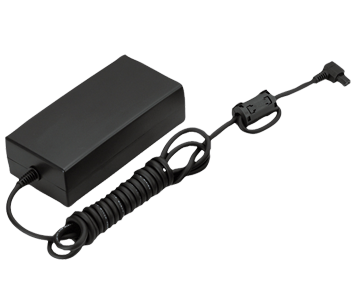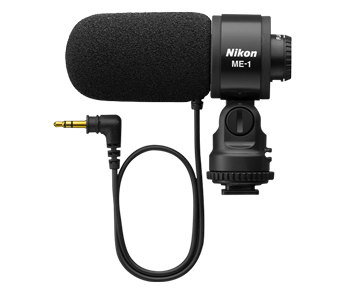





D4
Overview
Limits are there to be pushed. And this SLR is made to push them.
The D4 offers a powerful combination of up to 11 fps, a 16.2 megapixel FX-format sensor and phenomenally high ISO (extendable up to 204,800, equivalent). D-movie delivers all the flexibility you need for broadcast quality video. The Kevlar/carbon fiber-composite shutter unit boasts a standard life cycle rating of 400,000 releases, thirty percent more than its predecessor.
Ready for anything, the D4 has the durability and the versatility to realize every shooting opportunity out there.
16.2 megapixel FX-format (full-frame) CMOS sensor with fast channel readout and up to 11 fps consecutive shooting in FX-format.
ISO 100–12800: extendable up to 204,800 (equivalent) and down to 50 (equivalent). High signal-to-noise ratio and wide dynamic range.
Multi-area format D-Movie: records Full HD (1080p) movies in FX- and DX-format, as well as in native Full HD (1920x1080) crop. Offers uncompressed full-resolution HDMI output to external devices.
Newly developed, highly durable Kevlar/carbon fiber-composite shutter unit: standard life cycle rating of 400,000 releases, with a maximum shutter speed of 1/8000 to 30s and flash synchronization at up to 1/250 sec.
Multi-CAM3500FX 51-point AF system: individually selectable or configurable in 9-point, 21-point and 51-point coverage settings. Sensitive down to -2 EV (ISO 100, 20°C/68°F).
EXPEED 3 image processing engine with 14-bit A/D conversion and 16-bit image processing for superb tonal gradation.
8 cm (3.2-in.), 922k-dot LCD monitor with auto brightness control. Anti-reflective with wide color reproduction.
3D Color Matrix Metering III: 91k pixel AE AF sensor with full-time face recognition.
100% viewfinder coverage and three Crop Modes: 5:4, 1.2x and DX-format. With viewfinder masking.
Movie frame rates: offers 30p, 25p and 24p and a max recording time of approx. 20 minutes.
High-fidelity audio control: features a stereo microphone input and an audio out for external headphones, which lets you fine tune audio in isolation both before and during recording. A line input setting for PCM linear recorders is also provided.
Storage media: two card slots. One for high-speed CF (UDMA 7) cards and one for high-speed, high-capacity XQD card slots.
Wireless LAN and Ethernet support via optional Wireless Transmitter WT-4 or the newly designed compact Wireless Transmitter WT-5.
Tech Specs
-
-
Type
-
Single-lens reflex digital camera
-
-
-
Lens mount
-
Nikon F mount (with AF coupling and AF contacts)
-
-
-
Effective pixels
-
16.2 million
-
-
-
Image sensor
-
36.0 × 23.9 mm CMOS sensor (Nikon FX format)
-
-
-
Total pixels
-
16.6 million
-
-
-
Dust-reduction system
-
Image sensor cleaning, Image Dust Off reference data (requires optional Capture NX 2 software)
-
-
-
Image size (pixels)
-
1) FX format (36×24): 4,928 × 3,280 (L), 3,696 × 2,456 (M), 2,464 × 1,640 (S) 2) 1.2× (30×20): 4,096 × 2,720 (L), 3,072 × 2,040 (M), 2,048 × 1,360 (S) 3) DX format (24×16): 3,200 × 2,128 (L), 2,400 × 1,592 (M), 1,600 × 1,064 (S) 4) 5:4 (30×24): 4,096 × 3,280 (L), 3,072 × 2,456 (M), 2,048 × 1,640 (S) 5) FX-format photographs taken in movie live view (16:9): 4,928 × 2,768 (L), 3,696 × 2,072 (M), 2,464 × 1,384 (S) 6) DX-format photographs taken in movie live view (16:9): 3,200 × 1,792 (L), 2,400 × 1,344 (M), 1,600 × 896 (S) 7) FX-format photographs taken in movie live view (3:2): 4,928 × 3,280 (L), 3,696 × 2,456 (M), 2,464 × 1,640 (S) 8) DX-format photographs taken in movie live view (3:2): 3,200 × 2,128 (L), 2,400 × 1,592 (M), 1,600 × 1,064 (S) A DX-based format is used for photographs taken using the DX (24 × 16) 1.5× image area; an FX-based format is used for all other photographs
-
-
-
Storage file formats
-
NEF (RAW): 12 or 14 bit, lossless compressed, compressed or uncompressed, TIFF (RGB), JPEG: JPEG-Baseline compliant with fine (approx. 1:4), normal (approx. 1:8) or basic (approx. 1:16) compression (Size priority); Optimal quality compression available, NEF (RAW)+JPEG: Single photograph recorded in both NEF (RAW) and JPEG formats.
-
-
-
Picture Control System
-
Can be selected from Standard, Neutral, Vivid, Monochrome, Portrait, Landscape; selected Picture Control can be modified; storage for custom Picture Controls
-
-
-
Storage media
-
XQD and Type I CompactFlash memory cards (UDMA compliant)
-
-
-
Dual card slot
-
Either card can be used for primary or backup storage or for separate storage of NEF (RAW) and JPEG images; pictures can be copied between cards.
-
-
-
File system
-
DCF (Design Rule for Camera File System) 2.0, DPOF (Digital Print Order Format), Exif (Exchangeable Image File Format for Digital Still Cameras) 2.3, PictBridge
-
-
-
Viewfinder
-
Eye-level pentaprism single-lens reflex viewfinder
-
-
-
Frame coverage
-
FX (36×24): Approx. 100% horizontal and 100% vertical, 1.2× (30×20): Approx. 97% horizontal and 97% vertical, DX (24×16): Approx. 97% horizontal and 97% vertical, 5:4 (30×24): Approx. 97% horizontal and 100% vertical
-
-
-
Magnification
-
Approx. 0.7× (50 mm f/1.4 lens at infinity, -1.0 m-1)
-
-
-
Eyepoint
-
18 mm (-1.0 m-1; from center surface of viewfinder eyepiece lens)
-
-
-
Diopter adjustment
-
-3 to +1 m-1
-
-
-
Focusing screen
-
Type B BriteView Clear Matte Mark VIII screen with AF area brackets and framing grid
-
-
-
Depth-of-field preview
-
When Pv button is pressed, lens aperture is stopped down to value selected by user (A and M modes) or by camera (P and S modes)
-
-
-
Lens aperture
-
Instant return, electronically controlled
-
-
-
Compatible lenses
-
Compatible with AF NIKKOR lenses, including type G and D lenses (some restrictions apply to PC-NIKKOR lenses), DX lenses [using DX (24×16) image area], AI-P NIKKOR lenses, and non-CPU AI lenses (exposure modes A and M only); IX-NIKKOR lenses, lenses for the F3AF, and non-AI lenses cannot be used The electronic rangefinder can be used with lenses that have a maximum aperture of f/5.6 or faster (the electronic rangefinder supports the 11 focus points with lenses that have a maximum aperture of f/8 or faster)
-
-
-
Shutter type
-
Electronically-controlled vertical-travel focal-plane shutter
-
-
-
Shutter speed
-
1/8,000 to 30 s in steps of 1/3, 1/2 or 1 EV, bulb, X250
-
-
-
Flash sync speed
-
X=1/250 s; synchronizes with shutter at 1/250 s or slower
-
-
-
Release mode
-
S (single frame), CL (continuous low speed), CH (continuous high speed), Q (quiet shutter-release), (self-timer), MUP (mirror up)
-
-
-
Frame advance rate
-
Up to 10 fps (CL) or 10 to 11 fps (CH)
-
-
-
Self-timer
-
2 s, 5 s, 10 s, 20 s; 1 to 9 exposures at intervals of 0.5, 1, 2 or 3 s
-
-
-
Exposure metering
-
TTL exposure metering using RGB sensor with approx. 91K (91,000) pixels
-
-
-
Metering method
-
1) 3D Color Matrix Metering III (type G and D lenses); Color Matrix Metering III (other CPU lenses); Color Matrix Metering (non-CPU lenses if user provides lens data) 2) Center-Weighted: Weight of 75% given to 12-mm circle in center of frame, diameter of circle can be changed to 8, 15 or 20 mm, or weighting can be based on average of entire frame (non-CPU lenses use 12-mm circle or average of entire frame) 3) Spot: Meters 4-mm circle (about 1.5% of frame) centered on selected focus point (on center focus point when non-CPU lens is used)
-
-
-
Metering range (ISO 100, f/1.4 lens, 20 °C/68 °F)
-
Matrix or center-weighted metering: -1 to 20 EV
-
-
-
Exposure meter coupling
-
Combined CPU and AI
-
-
-
Modes
-
Programmed auto with flexible program (P); shutter-priority auto (S); aperture-priority auto (A); manual (M)
-
-
-
Exposure compensation
-
-5 to +5 EV in increments of 1/3, 1/2 or 1 EV
-
-
-
Exposure bracketing
-
2 to 9 frames in steps of 1/3, 1/2, 2/3 or 1 EV
-
-
-
Exposure lock
-
Luminosity locked at detected value with the center of the sub-selector
-
-
-
ISO sensitivity
-
ISO 100 to 12800 in steps of 1/3, 1/2 or 1 EV; can also be set to approx. 0.3, 0.5, 0.7 or 1 EV (ISO 50 equivalent) below ISO 100 or to approx. 0.3, 0.5, 0.7, 1, 2, 3 or 4 EV (ISO 204800 equivalent) above ISO 12800; auto ISO sensitivity control available
-
-
-
Active D-Lighting
-
Can be selected from auto, extra high +2/+1, high, normal, low or off
-
-
-
ADL bracketing
-
2 frames using selected value for one frame or 3 to 5 frames using preset values for all frames
-
-
-
Autofocus
-
Nikon Advanced Multi-CAM 3500FX autofocus sensor module with TTL phase detection, fine-tuning, and 51 focus points (including 15 cross-type sensors with f/8 supported by 11 sensors)
-
-
-
Detection range
-
-2 to +19 EV (ISO 100, 20°C/68°F)
-
-
-
Lens servo
-
Autofocus (AF): Single-servo autofocus (AF-S); continuous-servo autofocus (AF-C); predictive focus tracking automatically activated according to subject status Manual focus (M): Electronic rangefinder can be used
-
-
-
Focus points
-
Can be selected from 51 or 11 focus points
-
-
-
AF-area mode
-
Single-point AF, 9-, 21- or 51-point dynamic-area AF, 3D-tracking, auto-area AF
-
-
-
Focus lock
-
Focus can be locked by pressing shutter-release button halfway (single-servo autofocus) or by pressing the center of the sub-selector
-
-
-
Flash control
-
TTL: i-TTL flash control using RGB sensor with approx. 91K (91,000) pixels is available with SB-910, SB-900, SB-800, SB-700, SB-600 or SB-400; i-TTL balanced fill-flash for digital SLR is used with matrix and center-weighted metering, standard i-TTL flash for digital SLR with spot metering
-
-
-
Flash modes
-
Front-curtain sync, slow sync, rear-curtain sync, red-eye reduction, red-eye reduction with slow sync, slow rear-curtain sync; auto FP high-speed sync supported
-
-
-
Flash compensation
-
-3 to +1 EV in increments of 1/3, 1/2 or 1 EV
-
-
-
Flash bracketing
-
2 to 9 frames in steps of 1/3, 1/2, 2/3 or 1 EV
-
-
-
Flash-ready indicator
-
Lights when optional flash unit is fully charged; flashes after flash is fired at full output
-
-
-
Accessory shoe
-
ISO 518 hot-shoe with sync and data contacts and safety lock
-
-
-
Nikon Creative Lighting System
-
Advanced Wireless Lighting supported with SB-910, SB-900, SB-800 or SB-700 as a master flash and SB-600 or SB-R200 as remotes, or SU-800 as commander; auto FP high-speed sync and modeling illumination supported with all CLS-compatible flash units except SB-400; Flash Color Information Communication and FV lock supported with all CLS-compatible flash units
-
-
-
Sync terminal
-
ISO 519 sync terminal with locking thread
-
-
-
White balance
-
Auto (2 types), incandescent, fluorescent (7 types), direct sunlight, flash, cloudy, shade, preset manual (up to 4 values can be stored), choose color temperature (2,500 K to 10,000 K); all with fine-tuning
-
-
-
ADL bracketing
-
2 to 9 frames in steps of 1, 2 or 3
-
-
-
Live View - Modes
-
Live view photography (quiet or silent), movie live view
-
-
-
Live view - lens servo
-
• Autofocus (AF): Single-servo autofocus (AF-S); full-time servo autofocus (AF-F) • Manual focus (M)
-
-
-
Live view - AF-area mode
-
Face-priority AF, wide-area AF, normal-area AF, subject-tracking AF
-
-
-
Live view - autofocus
-
Contrast-detect AF anywhere in frame (camera selects focus point automatically when face-priority AF or subject-tracking AF is selected)
-
-
-
Movie - metering
-
TTL exposure metering using main image sensor
-
-
-
Movie - frame size (pixels) and frame rate
-
• 1,920 × 1,080; 30p (progressive), 25p, 24p • 1,920 × 1,080 crop; 30p, 25p, 24p • 1,280 × 720; 60p, 50p, 30p, 25p • 640 × 424; 30p, 25p Actual frame rates for 60p, 50p, 30p, 25p, and 24p are 59.94, 50, 29.97, 25, and 23.976 fps respectively; all options support both high and normal image quality
-
-
-
Movie - file format
-
MOV
-
-
-
Movie - video compression
-
H.264/MPEG-4 Advanced Video Coding
-
-
-
Movie - audio recording format
-
Linear PCM
-
-
-
Movie - audio recording device
-
Built-in monaural or external stereo microphone; sensitivity adjustable
-
-
-
Movie - ISO sensitivity
-
Automatically adjusted in the range ISO 200 to 12800 or ISO 200 to Hi 4
-
-
-
Movie - maximum recording time
-
Approx. 29 min. 59 s
-
-
-
Monitor
-
8-cm (3.2-in.), approx. 921k-dot (VGA) TFT LCD with 170° viewing angle, approx. 100% frame coverage, and automatic monitor brightness control using ambient brightness sensor
-
-
-
Playback
-
Full-frame and thumbnail (4, 9, or 72 images) playback with playback zoom, movie playback, photo and/or movie slide shows, histogram display, highlights, photo information, GPS data display, auto image rotation, voice memo input and playback, and IPTC information embedding and display
-
-
-
USB
-
Hi-Speed USB
-
-
-
HDMI output
-
Type C mini-pin HDMI connector; can be used simultaneously with camera monitor
-
-
-
Audio input
-
Stereo mini-pin jack (3.5-mm diameter; plug-in power supported)
-
-
-
Audio output
-
Stereo mini-pin jack (3.5-mm diameter)
-
-
-
Accessory terminal(s)
-
Can be used to connect optional remote control, GPS Unit GP-1 or GPS device compliant with NMEA0183 version 2.01 or 3.01 (requires optional GPS Adapter Cord MC-35 and cable with D-sub 9-pin connector)
-
-
-
Supported languages
-
Arabic, Chinese (Simplified and Traditional), Czech, Danish, Dutch, English, Finnish, French, German, Indonesian, Italian, Japanese, Korean, Norwegian, Polish, Portuguese, Romanian, Russian, Spanish, Swedish, Thai, Turkish and Ukrainian
-
-
-
Battery
-
One Rechargeable Li-ion Battery EN-EL18
-
-
-
AC adapter
-
AC Adapter EH-6b; requires Power Connector EP-6 (available separately)
-
-
-
Tripod socket
-
1/4 in. (ISO 1222)
-
-
-
Dimensions (W × H × D)
-
Approx. 160 × 156.5 × 90.5 mm/6.3 × 6.2 × 3.6 in.
-
-
-
Weight
-
Approx. 1,340 g/2 lb 15.3 oz with battery and XQD memory card but without body cap and accessory shoe cover; approx. 1,180 g/2 lb 9.6 oz (camera body only)
-
-
-
Operating environment - temperature
-
Temperature: 0 to 40°C/32 to 104°F; humidity: less than 85% (no condensation)
-
-
-
Supplied accessories
-
Rechargeable Li-ion Battery EN-EL18, Battery Charger MH-26, USB Cable UC-E15, USB Cable Clip, Camera Strap AN-DC7, Body Cap BF-1B, Accessory Shoe Cover BS-2, Mic Stereo Input Jack for Stereo Microphone ME-1 UF-2
-

































 Contact Us
Contact Us